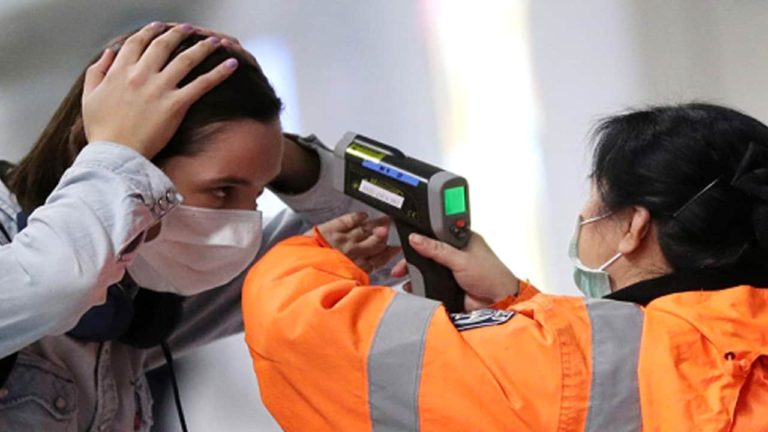Best Practices for Safe Management Measure in Workplace

The nature and extent of the restrictions, such as on suspension of non-essential activities, differ between Member States and sectors, but a substantial proportion of workers either have to work from home, or if their work cannot be performed at a distance, they stay at home often under an income replacement arrangement. Once the physical distancing for safe management measures achieve a sufficient reduction in COVID-19 transmission rates, national administrations are authorising a gradual resumption of work activities.
This is being done stepwise, with work that is considered essential for health protection and the economy authorised first and work that can be done effectively while working from home last. However, regardless of how and to what extent normal work activities resume, it is highly likely that some measures will remain in place for some time to avoid a steep increase in infection rates. Furthermore, it is also possible that an increase in infections at some point in the future will require a reintroduction of restrictive safe management measures in some cases.
Work From Home for Safe Management Measure
- Working from home must be the default mode of working (including companies resuming operations in Phases One and Two). Employees who have been working from home so far must continue to do so, and go to the office only where there is no alternative.
- For employees who are still unable to work from home, employers should review work processes, provide the necessary IT equipment to employees and adopt solutions that enable remote working and online collaboration. Employers are encouraged to leverage technology3 to ensure business continuity and safe management measure.
- Companies should continue to conduct virtual meetings as much as possible. Physical meetings between employees and with suppliers / contractors must be minimised, e.g. by using tele-conferencing facilities.
- Employers must cancel or defer all events or activities that involve close and prolonged contact amongst participants, e.g. conferences, seminars and exhibitions.
- Companies should pay special attention to vulnerable employees (e.g. older employees, pregnant employees and employees who have underlying medical conditions). Besides enabling them to work from home, employers may also have to temporarily redeploy vulnerable employees to another role within the company.
Preventing spread of infection in Workplace
The implementation of safe work practices to limit exposure to COVID-19 at work requires first assessing the risks, and then implementing the hierarchy of controls. This means putting in place control safe management measures to first eliminate the risk and if this is not possible, minimise worker exposure. Start first with collective measures and if necessary supplement them with individual measures, such as personal protective equipment (PPE). Below are some examples of control measures, however, not all of them will be applicable to all workplaces or jobs due to their nature.
- Carry out only essential work for the time being; it may be possible to postpone some work to when the risk is lower. If possible, deliver services remotely (phone or video) instead of in person. Ensure that only workers who are essential to the job are present at the workplace and minimise the presence of third parties.
- Reduce, as far as possible, physical contact between workers (e.g. during meetings or during breaks). Isolate workers who can carry out their tasks alone safely and who do not require specialised equipment or machinery that cannot be moved. For example, whenever possible, arrange for them to work alone in a spare office, staff room, canteen, or meeting room. If possible, ask vulnerable workers to work from home (older people and those with chronic conditions (including hypertension, lung or heart problems, diabetes, or who are undergoing cancer treatment or some other immunosuppression) and pregnant workers. Workers with close family members who are at high risk may also need to telework.
- Eliminate, and if not possible limit, physical interaction with and between customers. For example, through online or phone orders, contactless delivery or managed entry (while also avoiding crowding outside), and physical distancing both inside and outside the premises.
- When delivering goods, do so through pick-up or delivery outside the premises. Advise drivers on good hygiene in the cab and provide them with appropriate sanitation gel and wipes. Delivery workers must be allowed to use facilities such as toilets, cafeterias, changing rooms and showers, albeit with the appropriate precautions (such as allowing only one user at a time and regular cleaning).
- Place an impervious barrier between workers, especially if they are not able to keep a two-metre distance from each other. Barriers can be purpose-made or improvised using items such as plastic sheeting, partitions, mobile drawers, or storage units. Things that are not solid or that have gaps, like pot plants or trolleys, or that create a new risk, such as from tripping or falling objects are to be avoided. If a barrier cannot be used, additional space between workers should be created by, for example, ensuring they have at least two empty desks either side of them.
- If close contact is unavoidable, keep it to less than 15 minutes. Reduce contact between different parts of your business at the start and end of shifts. Arrange the timing of meal breaks to reduce the number of people sharing a cafeteria, staff room, or kitchen. Ensure there is only one worker at a time in bathrooms and changing rooms. Place a sign on the main door indicating when one of the toilets is in use to ensure that only one person at a time enters. Organise shifts to take account of cleaning and sanitation tasks.
- Supply soap and water or appropriate hand sanitiser at convenient places and advise workers to wash their hands frequently. Clean your premises frequently, especially counters, door handles, tools and other surfaces that people touch often and provide good ventilation if possible.
- Avoid excessive workload on cleaning staff by taking appropriate measures, such as assigning additional staff to the tasks and asking workers to leave their workspace tidy. Provide workers with tissues and waste bins lined with a plastic bag so that they can be emptied without contacting the contents.
- If you have identified a risk of infection despite having applied all feasible safety measures, then provide all necessary PPE. It is important to train workers in correct use of PPE, ensuring that they follow the guidance available on use of facemasks and gloves.
- Place posters that encourage staying home when sick, cough and sneeze etiquette, and hand hygiene at the entrance to the workplace and in other areas where they will be seen.
- Facilitate workers’ use of individual rather than collective transport, for example by making available car parking or a place for storing bicycles securely, and encouraging workers to walk to work, if possible.
- Put in place policies on flexible leave and remote working to limit presence at the workplace, when needed.
Guidance on face mask for Safe Management Measure
The use of face masks may be considered when working in closed spaces with other persons, or when it is not possible to maintain a safe distance from other people. Such situations may arise not only in the workplace, but also at clients premises, when carrying out visits or deliveries, or when using public transport.
Face masks should only be considered as a complementary safe management measure and not a replacement for established preventive practices, such as physical distancing, cough and sneeze etiquette, hand hygiene and avoiding face touching.
It is essential that workers use face masks properly so that they are effective and safe.
- It should fit properly, completely covering the face from bridge of nose to chin.
- Clean hands properly before putting the face mask on or taking it off.
- Only touch the cord or elastic at the back of the face mask when removing it, not the front.
- If the face mask is disposable, be sure to do so safely in a proper container.
- If reusable, wash the face mask as soon as possible after use with detergent at 600C.
The best way to reduce any risk of infection is good hygiene and avoiding direct or close contact (closer than 2 metres) with any potentially infected person. Any worker who deals with members of the public from behind a screen should be protected from airborne particles.
Implementation of Safe Management Measures System
Employers must establish a system to implement the above Safe Management Measures to provide a safe working environment and minimise risks of COVID-19 outbreaks. These measures must be implemented in a sustainable manner for as long as necessary.
Implement a detailed monitoring plan to ensure compliance with Safe Management Measures and timely resolution of outstanding issues20.
Appoint Safe Management Officer to assist in the implementation, coordination and monitoring of the system of Safe Management Measures at the workplace. For unionised companies, union leaders or WSH officers could be appointed as SMOs. Employers must provide appointed SMOs with adequate instruction, information and supervision as is necessary for them to fulfil their required duties. SMOs are strongly encouraged to receive training. The duties of the Officer include:
- To coordinate implementation of Safe Management Measures, including identifying relevant risks, recommending and assisting in implementing measures to mitigate the risks, and communicating the measures to all personnel working in the workplace;
- To conduct inspections and checks, to ensure compliance at all times. Any non-compliance found during the inspections should be reported and documented;
- To remedy non-compliance found during the inspections and checks through immediate action; and
- To keep records of inspections, checks and correction actions, to be made available upon request by a Government Inspector.
Manage Unwell Worker at the Workplace
Persons who have become seriously ill may require special consideration even after being declared fit for work. There are some indications that coronavirus patients may suffer from reduced lung capacity following a bout of the disease. Workers in this situation may need their work to be adapted and may need time off to undergo physiotherapy. Workers who have had to spend time in intensive care (IC) may face specific challenges.
- Ensure regular checks for temperature and respiratory symptoms for all onsite employees and visitors, twice daily or where relevant. Employers must be able to demonstrate that these checks are in place during inspections.
- Record proximity data on phones: To help MOH to more quickly identify potential close contacts of COVID-19 patients and reduce disease transmission, employers should encourage all employees to download and activate the TraceTogether app.
- Actively monitor unwell employees and guard against incipient outbreaks:
- Employees at the workplace who have visited a clinic must submit to their employers records of their MCs and diagnoses provided (only for COVID-19-related symptoms, including acute respiratory infections), and if they were tested for COVID-19 and the results of their tests.
- Employers must take preventive action to guard against incipient outbreaks at the workplace, such as requiring these employees on MCs to closely monitor their health before returning to the workplace and requiring these employees’ close contacts at the workplace to monitor their health more regularly.





